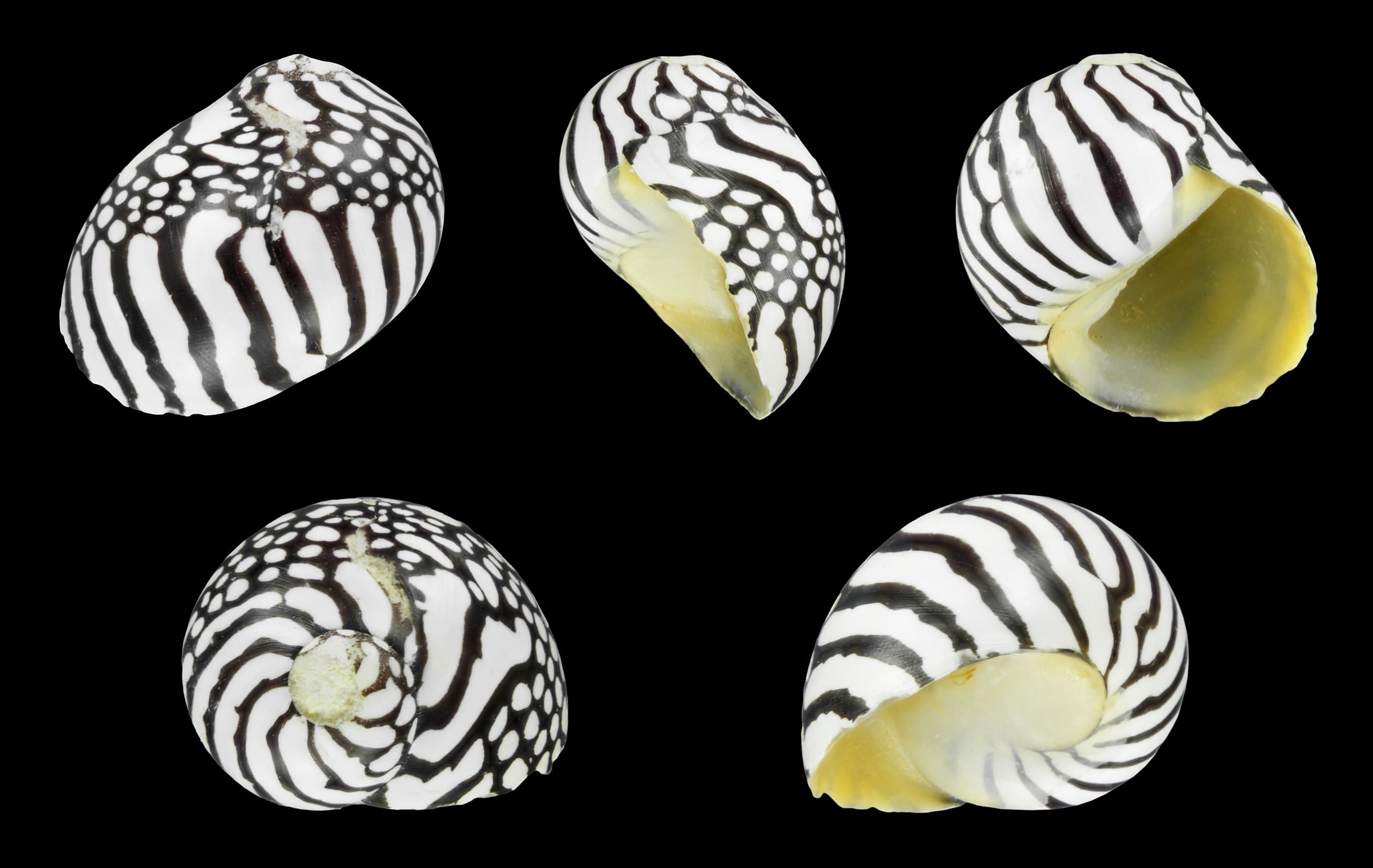Common name: Zebra Nerite
General Information
The Zebra Nerite (Puperita pupa) is a small, strikingly patterned marine snail that has gained popularity among aquarists for its algae-eating prowess and unique appearance. Its shell features bold black and white stripes, reminiscent of a zebra, making it a visually appealing addition to any aquarium. Native to the Caribbean and the western Atlantic, these snails are often found in intertidal zones, where they graze on algae-covered surfaces.
Zebra Nerites are highly valued in the aquarium trade for their ability to control algae growth, making them a natural and eco-friendly solution for maintaining clean tanks. Their peaceful nature and compatibility with a wide range of tank mates further enhance their appeal. Additionally, their small size and hardy nature make them suitable for both novice and experienced aquarists.
Details
- Estimated price
- Cheap Affordable and widely available in the trade
- Recommended minimum volume
- 20 liter (5.3 gallons)
- Salinity
- S.G. 1.023 to 1.025
- Temperature
- 24 to 28 °C (75 to 82 °F)
- Acidity
- pH 8 to 8.5
- Average size
- 2 cm (¾″)
- Care level
- Easy Easy to care for but sensitive to water quality
- Diet
- Herbivore Feeds on algae and biofilm; supplement with algae wafers if needed
- Reefsafe
- Yes
- Aggression
- Peaceful
- Captive bred
- No Reproduction in captivity is rare due to larval requirements
Taxonomy
- KingdomAnimalsAnimalia
- PhylumMollusksMollusca
- ClassGastropodsGastropoda
- OrderNerite SnailsCycloneritimorpha
- FamilyNerite SnailsNeritidae
- GenusZebra NeritesPuperita Gray, 1857
- SpeciesZebra NeritePuperita pupa (Linnaeus, 1767)
- SynonymsNeretina pupa (Linnaeus, 1767)Nerita pupa Linnaeus, 1767Neritina pupa (Linnaeus, 1767)Puperita tristis (d'Orbigny, 1842)
- Source: GBIF | Global Biodiversity Information Facility
Care
Zebra Nerites are relatively easy to care for, provided their basic needs are met. They thrive in well-established aquariums with stable water parameters and plenty of surfaces to graze on. These snails are sensitive to poor water quality, so regular maintenance and water changes are essential. They are also known to escape tanks without tight-fitting lids, so precautions should be taken to prevent them from wandering out.
These snails are best kept in tanks with peaceful inhabitants, as they are defenseless against aggressive fish or invertebrates. They are reef-safe and can coexist with corals and other invertebrates without causing harm.
Diet and Feeding
In their natural habitat, Zebra Nerites feed primarily on algae and biofilm. In captivity, they will happily graze on algae growing on glass, rocks, and decorations. If natural algae sources are insufficient, supplemental feeding with algae wafers or blanched vegetables like zucchini can be provided.
Zebra Nerites do not require frequent feeding, as they are efficient grazers. However, ensuring a consistent supply of food is crucial for their health and longevity. Avoid overfeeding, as uneaten food can degrade water quality.
Behavior and Compatibility
Zebra Nerites are peaceful and non-aggressive, making them ideal for community tanks. They spend most of their time grazing on surfaces and are generally active during the day. Their small size and slow movement make them vulnerable to predation, so they should not be housed with aggressive or predatory species.
These snails are solitary and do not require companions, but they can be kept in groups without issues. They are compatible with a wide range of tank mates, including other snails, shrimp, and small, peaceful fish.
Reproduction
While Zebra Nerites may lay eggs in captivity, successful reproduction is rare. Their larvae require brackish or marine conditions to develop, which are challenging to replicate in most home aquariums. As a result, most Zebra Nerites available in the trade are wild-caught.
Health and Common Issues
Zebra Nerites are hardy but can be sensitive to poor water quality and sudden changes in parameters. Maintaining stable conditions and providing a clean environment are key to their health. They are also prone to dehydration if they escape the tank, so ensure the aquarium is securely covered.
When selecting Zebra Nerites, look for individuals with intact shells and active behavior. Avoid snails with damaged or eroded shells, as this can indicate poor health or inadequate care.
Habitat
Zebra Nerites are native to the Caribbean and western Atlantic, where they inhabit intertidal zones and rocky shorelines. They are adapted to environments with fluctuating salinity and temperature, making them resilient to a range of conditions. In captivity, they prefer stable, marine conditions with plenty of surfaces to graze on.






